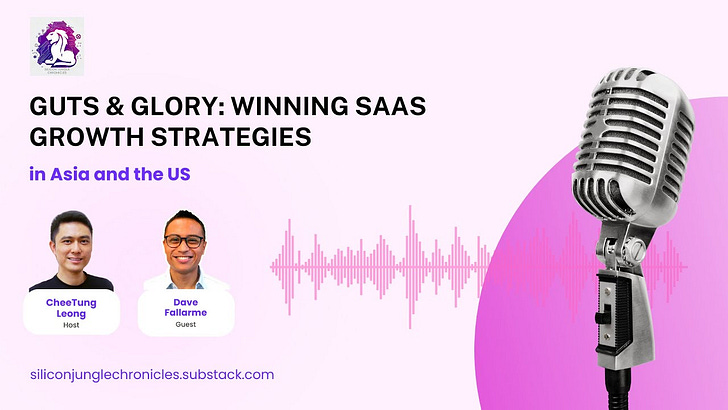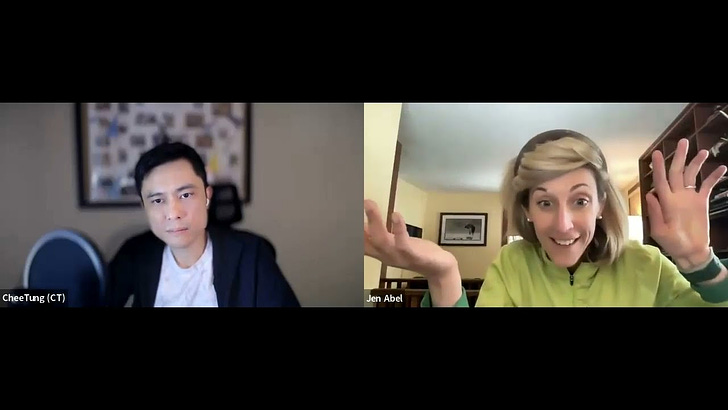Just how hard is it to run a SaaS company in Asia?
Dave thinks it’s a piece of cake.
I think it's not a stretch to say that Asia is the hardest. The hardest market in the world because it's so complex and fragmented.
Very few professionals have had the experience of running GTM in both Asia and the US, and succeeding with both.
I’ve known Dave Fallarme since he cracked an inbound motion for a referral marketing startup with predominantly US customers, and have followed his journey through when he had to crack the GTM in Asia for Hubspot, and beyond.
He moved all the way to NYC to hide from this interview, but for your benefit, I tracked him down to get his insights.
Approach each Asian market differently
While many American and European companies are attracted to the region due to its large population and impressive growth rates, they often underestimate the unique characteristics of each country within Asia.
Dave explained, "You go in and think, 'Oh, I'm going to put my base in Singapore or Sydney and expand into the region.' But then you realize your go-to-market strategy that worked in the US or Europe may not apply to countries like Indonesia or India. The language, buying patterns, and relationships are different."
As we’ve learnt at EngageRocket, it would be a mistake to treat Asia as a single market.
“Each country is unique and should be approached individually. You can't apply the same go-to-market strategy to all of Asia.”
What we found was that how we sold in Singapore was different than how we would sell into Indonesia, the Philippines, Malaysia, Hong Kong, India, and others.
Each market had its own culture (some like Indonesia had multiple different cultures depending on where you’re selling), and it’s not always a simple case of taking your English content and translating it into local languages.
If you're hoping to expand in Asia, getting good at flexing across languages, tech stacks and geographies are must-have competencies. Having the right relationships with the right people is also table stakes.
US and APAC respond to different messaging, but don’t go crazy with tinkering
When it comes to messaging, Dave stressed the need to adapt to the specific market and target audience (here’s a piece he’s written on the subject). He shared an example from his experience at Hubspot, where the company's brand awareness varied across different regions.
"Everybody thinks Hubspot is huge, but outside of our bubble, people have no clue what Hubspot is. In India, people thought we were a university because they were more familiar with Hubspot Academy than the Hubspot product."
Dave explained that messaging should be tailored to resonate with the target market. However, he cautioned against over-indexing on messaging.
"Messaging is important, but it should not be the sole focus. People buy based on their own research and recommendations from their networks. Your messaging can nudge them in the right direction, but it's not the deciding factor."
To find the right market entry strategy in the US, talk to your (narrow) ICP
When advising Asian companies on entering the US market, Dave emphasized the importance of understanding the target market's buying behavior and preferences.
Not surprisingly, he recommended talking to the ideal customer profile (ICP) and learning how they like to buy.
"You need to know what influences their purchasing decisions, who is involved in the process, and what they are comparing you to."
Dave also highlighted the need for a focused approach when entering the US market. He advised against trying to target the entire country at once, stating, "You need to slice it down and find the segment where you are the obvious choice. Focus on that niche and build your presence from there."
Here’s more useful tips to hang your GTM strategy on.
"The ICP buyer's journey should be the North Star of your go-to-market strategy. Everyone in the company should understand it and align their efforts accordingly."
💡 I have a bright idea. I’ll just go out and hire a VP of Sales from a competitor and get her to drive our market entry!
Dave would disagree.
Founder-led selling has to be the first phase of market entry, precisely because there’s a need to understand the ICP and buyer journey deeply before knowing who would be a great hire.
At EngageRocket, it took us awhile to understand our ICP in the US. Besides founder conversations, we threw everything and the kitchen sink at the market to see what would stick.
When we discovered what worked after a whole quarter of experimentation, our VP of Growth hire became obvious.
In Dave’s words:
"You need to figure out the playbook and the strategy yourself before bringing someone on board. Hiring too early can lead to misalignment and unrealistic expectations."
Key takeaways
For American companies trying to enter Asia
📌 Start with markets that respond best to your existing GTM motion in the US
📌 Treat each market individually, and don’t expect to easily replicate GTM across them
📌 Tailor your messaging accordingly, but don’t invest a huge amount of time obsessing over it
For Asian companies trying to enter the US
📌 Go narrow and deep with your ICP and your messaging
📌 Founders have to start the initial ICP conversations to understand buying behavior before hiring. If you can’t reach them at this stage, go home.
📌 Align the whole team around the buyer journey - use that as your North Star
Note: The article is based on a conversation with Dave Fallarme and includes direct quotes from the transcript of the conversation.
This Substack is where I write about our experience expanding from a stable, growing market in Asia, to competing in the largest SaaS market in the world.
We’d like to invite you to join us on this adventure by subscribing:
Thanks for reading Silicon Jungle Chronicles! Subscribe for free to receive new posts and support our journey.
What to expect?
📊 Comparative Data Analysis: Deep dives into metrics and strategies, comparing and contrasting SaaS practices between East and West.
🎙 Podcasts: Candid chats with industry leaders, unveiling the challenges and triumphs of the startup journey.
🎤 Exclusive Interviews: Conversations with SaaS pioneers and innovators, sharing their unique insights and visions.
✍️ Opinion Pieces: My take on trends, disruptions, and the future of tech in these dynamic regions.
Who's this for?
• Founders seeking strategies and stories from dual perspectives.
• Investors eager for a fresh, grounded take on the evolving SaaS landscape.
• Tech enthusiasts, analysts, or anyone curious about the heartbeat of startup ecosystems in both the East and West.
Thanks for reading and do share with someone you think could benefit from it!













Share this post